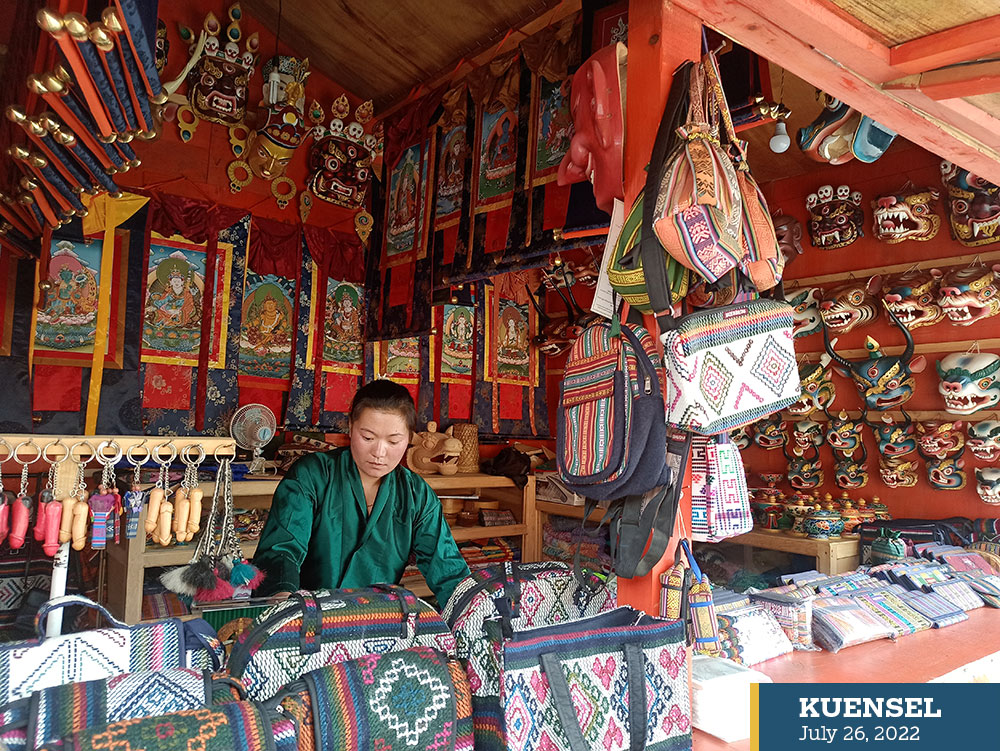Thukten Zangpo
After more than two years of restriction on international travel, the handicrafts sector will find its businesses booming again with the re-opening of tourism from September this year.
But then, at a time when Bhutan is redefining tourism, what services and products are we giving to convince visitors that Bhutan offers something truly different?
In the handicraft shops, for example, every item pretty much is imported from Nepal.
The government revised the sustainable development fee from USD 65 to USD 200 for every tourist per night.
Executive director of the Handicrafts Association of Bhutan, Chorten Dorji, said that the cheap and imported handicraft give no space for the growth of local products.
Cluster development officer of Agency of Promotion of Indigenous Arts (APIC), Cheki, said that some handicrafts imported from Nepal such as thangka, jewellery items and beads are in fact similar to those made by Bhutanese craftsmen.
Chorten Dorji said that the government has not been able to find a proper solution. “We see at least some hope with the new reform in the tourism sector.”
He added that if the import of handicraft items is not controlled, Brand Bhutan will have to take a severe beating in the markets at home and abroad. “We will lose identity. The government must do something serious to address it.”
Chorten Dorji said that the Brand Bhutan should be monitored and regulated strictly.
According to a press release from the Tourism Council of Bhutan, the regulations are being drawn up for the Bhutanese handicraft industry to authenticate its genuineness.
Chorten Dorji said that the Association should strive to focus on high value, better quality, and authentic Bhutanese handicraft items to match with tourism policy of promoting high value. “It is not about meeting international standards.”
The association has trained about 150 individuals in product designing and development.
Chorten Dorji said that Bhutanese handicraft items need to be semi-mechanised and marketing and promotion strategy improved.
He pointed out that the Bhutanese artisans have the skills but lack design concepts for product diversification. “With improved product designing and finishing, we need to set our own standards.”
The quality monitoring officer of APIC, Pema Loday, said that most of the handicraft items do not meet the product standardisation and certification.
One of the shopkeepers in the crafts market, Rinchen Dema, said that her stalls still have old stocks to clear.
She said that before the pandemic imported products were her main concern because tourists visit only the bigger craft shops and tour guides take a huge commission for bringing tourists to the shops.
Another shopkeeper in the craft market said that new products are emerging in the market from decorative-based to those that are utility-based which can help the Bhutanese handicraft industry.


